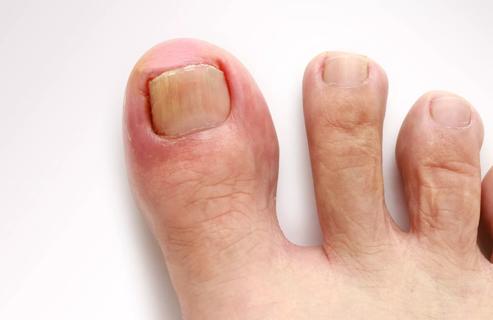Advertisement
Remedies and new options for tennis elbow

Do you have pain on the outside of your elbow that won’t seem to go away? If so, you could have tennis elbow — even if you’ve never swung a racket. And, if it’s been bothering you for more than a month or so, it’s a good idea to get it checked.
Advertisement
Cleveland Clinic is a non-profit academic medical center. Advertising on our site helps support our mission. We do not endorse non-Cleveland Clinic products or services. Policy
Most people with tennis elbow don’t require surgery. But if you do, you might be a candidate for a surprisingly quick outpatient procedure that can dramatically reduce your recovery time.
Known medically as lateral epicondylitis, tennis elbow can affect construction workers, manual laborers, meat cutters and even supermarket cashiers, usually between ages of 40 and 60. As many as 10 million Americans may suffer from this condition.
Many repetitive tasks using the hand, wrist and arm can cause the pain and inflammation of tennis elbow. Movements like gripping and twisting overwork the tendon that attaches your forearm muscles to the bony protrusion on the outside of your elbow.
Patients typically show up at the doctor after two or three months of elbow pain, according to sports medicine physician Dominic King, DO. But sooner is better. He and sports medicine physician, Jason Genin, DO, see multiple patients daily for this painful condition.
The longer your elbow pain persists, the more likely the tendon may continue to stay inflamed and may even begin to degenerate.
The body sometimes tries to heal the damage in a way that becomes uncontrolled and erratic. Dr. King says that parts of the tissue start to take on a hard, knotted consistency, known as tendinosis.
“Tendinosis is like having a ball of mucous stuck in your tendon,” he says, adding that tendinosis doesn’t seem to go away on its own over time.
If it’s your first time with tennis elbow, your doctor likely will recommend these conservative treatments:
Advertisement
If conservative treatments don’t help, there are still options to stimulate a normal healing process. Your doctor likely will order musculoskeletal ultrasound imaging to see precisely where the problem is.
“If someone comes to me saying, ‘This has been going on for six months,’ or, ‘Over the last three years, I’ve had this four times,’ we’re a little more keen to get an ultrasound earlier,” says Dr. King. “Something is wrong with the tendon that keeps making the pain come back.”
The imaging allows your doctor to examine the exact characteristics of the tendon, and what areas are degenerative. Corticosteroid injections or platelet rich plasma injections may be used to help control inflammation. However, the use of these injections can be unreliable.
If there’s still no improvement after a conservative approach and injection therapies, you may need surgery, Dr. King says.
In a typical operation, the surgeon exposes the tendon, removes the damaged area and makes repairs. Three to six months of recovery are usually required before you can resume normal activities.
A minimally invasive option is available for some patients. It uses an FDA-approved technology in a procedure called minimally invasive tenotomy.
A needle device uses a stream of normal saline to create a gentle suction. It then removes the damaged, thickened mucous-like tendinosis. It leaves the soft, pliable normal tendon unaffected.
Here’s what to expect:
The small skin puncture doesn’t require stitches, and you can return to normal activities in four to six weeks, Dr. King says. Full recovery takes around three months.
He stresses that treatment and surgery decisions depend on your history of pain, how serious the tendon damage is and whether your occupation requires excessive use of the wrist and forearm.
Sometimes the damage is so severe that open surgery is the only option.
“Tennis elbow can be painful,” he says. “Treatment does not always involve injections or surgery. But if it does, a minimally invasive approach can be a reasonable approach.”
Advertisement
Learn more about our editorial process.
Advertisement

What to know before seeking medical attention

Plus, exercises and movements to avoid

Footwear that offers cushioning plus heel and arch support can help you relieve and manage symptoms

Over-the-counter pain medications, typing pads and wrist braces can help when you’re in a wrist pinch

Pain meds, toenail protectors and petrolatum jelly may spare you a trip to a podiatrist

An ice bath can ease sore muscles and decrease inflammation after a workout

Wrist flexor and extensor stretches are the best stretches for wrist pain

Simple exercises like tendon glides and finger lifts can have a big impact

Focus on your body’s metabolic set point by eating healthy foods, making exercise a part of your routine and reducing stress

PFAS chemicals may make life easier — but they aren’t always so easy on the human body

While there’s little risk in trying this hair care treatment, there isn’t much science to back up the claims